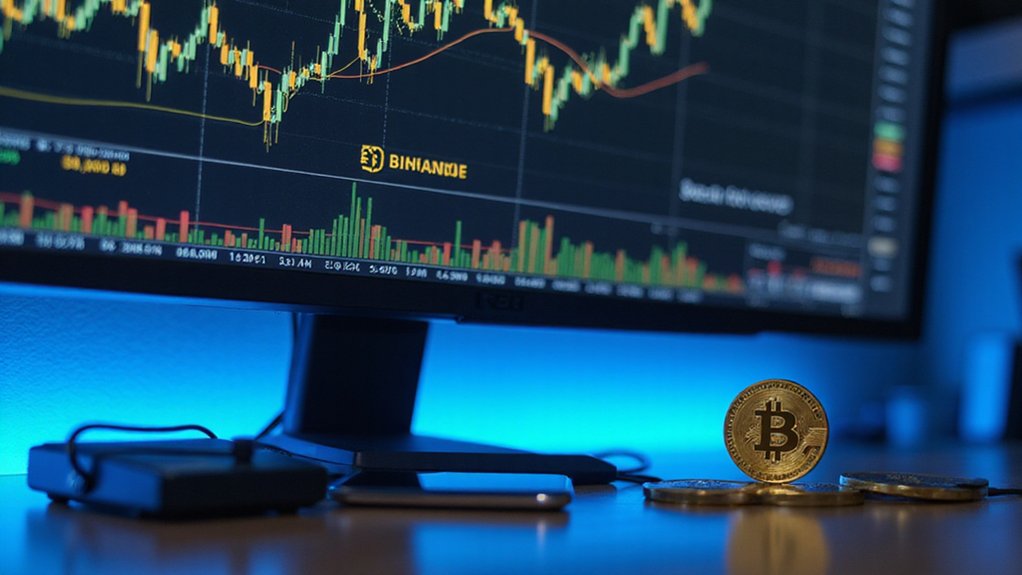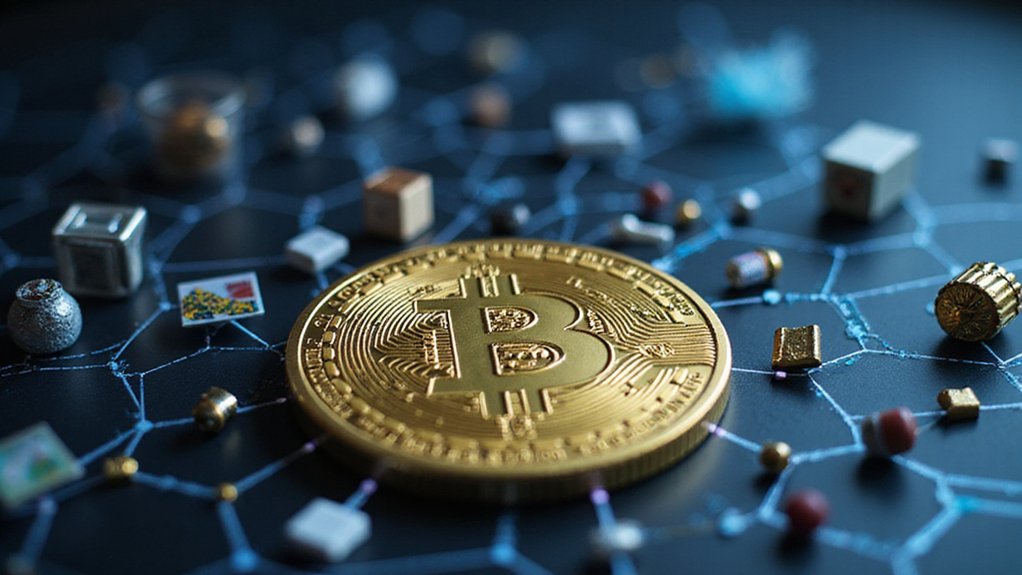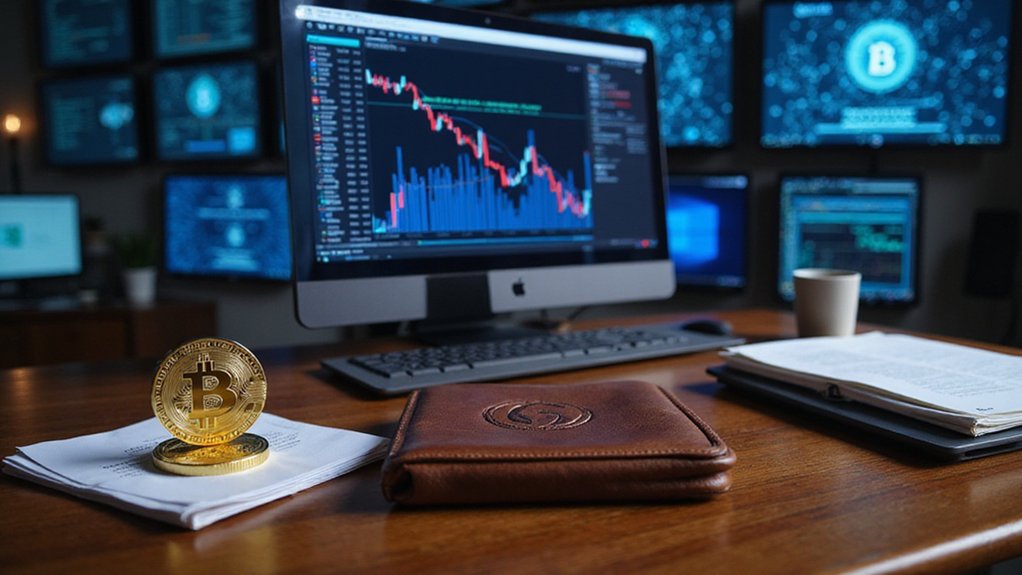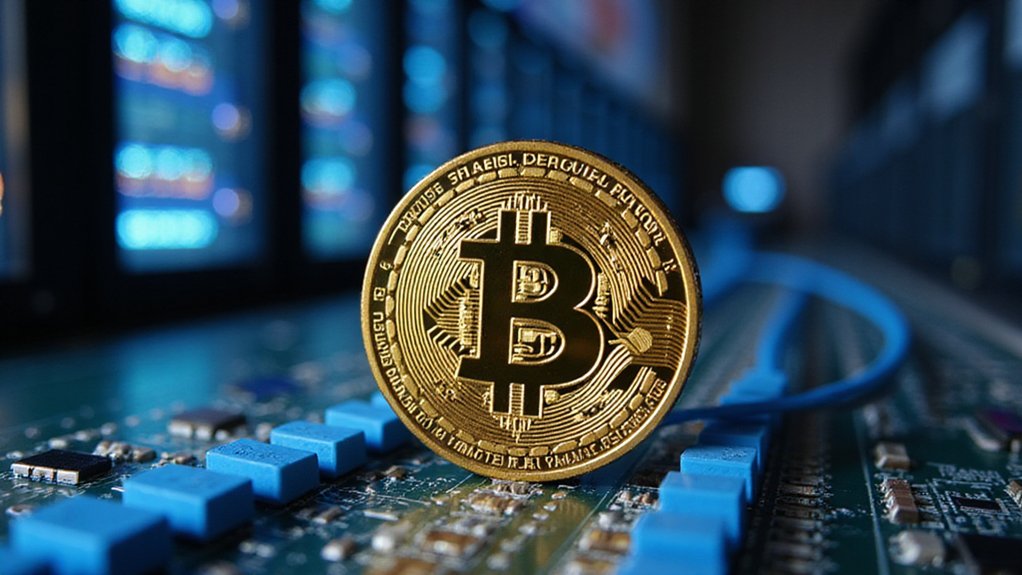Binance is the world’s largest cryptocurrency exchange by trading volume, facilitating transactions across 350+ digital assets. Founded in 2017, this financial behemoth offers spot and futures trading (with leverage up to a hair-raising 125x), automated bots, and staking services—all while charging a modest 0.1% fee. Despite its commanding market position, Binance grapples with significant regulatory challenges, including a $4.3 billion settlement and leadership changes. The platform’s robust security measures can’t entirely mask its regulatory complexities.
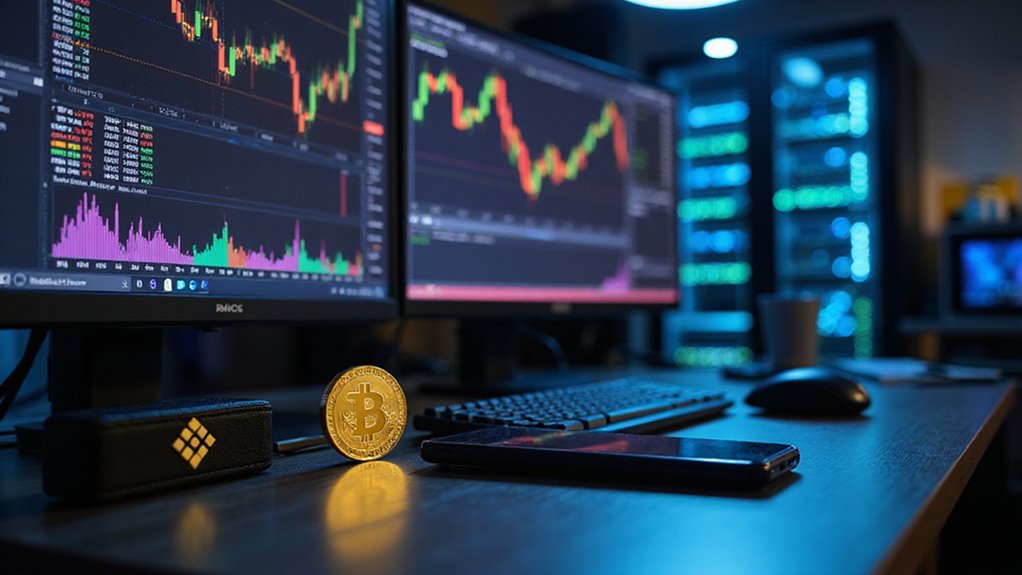
The titan of cryptocurrency exchanges that has weathered regulatory storms with the resilience of digital assets themselves, Binance stands as an undisputed colossus in the volatile world of crypto trading.
Founded in 2017, this behemoth has swiftly ascended to claim the crown of largest cryptocurrency exchange by daily trading volume—a staggering $76 billion on average—while offering access to over 350 cryptocurrencies from Bitcoin to the most esoteric altcoins that occasionally make rational investors question their life choices.
In just six years, Binance conquered crypto with eye-watering volumes and enough obscure tokens to make financial advisors weep.
Binance’s appeal lies partly in its fee structure (a modest 0.1% standard trading fee, further reducible through BNB token usage) and partly in its extensive suite of trading mechanisms.
Users navigate between spot trading for straightforward crypto-to-crypto transactions, futures contracts with leverage options that would make traditional brokers blanch (up to 125x on certain assets), and automated grid bots that promise passive income while you sleep—or obsessively check prices anyway.
The platform’s wallet integration facilitates seamless fund management, while advanced API access caters to the institutional player who requires more sophisticated trading parameters. The exchange also incorporates Binance Earn platform that allows users to stake stablecoins and generate interest on their holdings. As a centralized exchange, Binance requires users to trust the platform with custody of their funds in exchange for high liquidity and efficient trading.
The exchange hasn’t sailed entirely smooth waters, however.
A $4.3 billion settlement for anti-money laundering violations in 2023 precipitated CEO Changpeng Zhao’s resignation and prompted enhanced know-your-customer protocols.
The SEC’s lawsuit alleging unregistered securities operations further complicated Binance’s regulatory landscape, particularly in the U.S. market where Binance.US subsequently halted USD deposits.
Security remains paramount in an industry plagued by spectacular hacks; Binance maintains the SAFU fund (Secure Asset Fund for Users) as emergency insurance, employs mandatory two-factor authentication, and stores the majority of assets in cold storage—offline and beyond hackers’ reach.
The lack of a fixed headquarters has made Binance a regulatory moving target, as the company has shifted from China to Malta and beyond since its founding.
The exchange’s native BNB token extends beyond mere fee discounts, functioning as the backbone of the Binance Smart Chain ecosystem, an Ethereum-compatible blockchain supporting decentralized applications.
For traders seeking both depth and breadth in cryptocurrency markets, Binance offers an extensive, if occasionally regulatory-challenged, destination.
Frequently Asked Questions
How Does Binance’s Fee Structure Compare to Other Cryptocurrency Exchanges?
Binance offers particularly competitive fees in the cryptocurrency exchange landscape, with spot trading fees starting at 0.10% maker/0.15% taker—substantially lower than Coinbase’s upper rate of 0.60%.
Its tiered structure rewards high-volume traders with fees potentially dropping to 0.011%/0.023%, while BNB payments grant an additional 25% discount.
Unlike Coinbase’s wire transfer charges ($10/$25), Binance generally provides free deposit options.
Both exchanges, however, extract comparable service fees (roughly 30-35%) from staking rewards.
What Security Measures Does Binance Implement to Protect User Assets?
Binance implements a multi-layered security approach including two-factor authentication, wallet address whitelisting, and IP restrictions.
Its Secure Asset Fund for Users (SAFU) maintains over $1 billion as a safety net against breaches.
The exchange stores most assets in cold wallets—a prudent move in an industry where hot wallets remain irresistible targets—while employing continuous activity monitoring and automatic withdrawal suspensions for suspicious behavior.
Additional measures include anti-scam codes and thorough KYC/AML procedures.
Can I Use Binance in Countries With Cryptocurrency Restrictions?
Users in restricted countries face significant challenges accessing Binance.
While technically possible through VPNs, such circumvention violates Binance’s terms of service and may result in account freezes or closures.
Binance actively collaborates with regulators worldwide, offering country-specific platforms (e.g., Binance.US) where full access is limited.
The prudent approach? Comply with local regulations or seek legitimate alternatives rather than risking funds in a regulatory gray zone that could collapse without warning.
How Long Do Withdrawals Typically Take on Binance?
Withdrawal times on Binance vary greatly by method.
Crypto withdrawals typically receive a transaction ID within 30-60 minutes, though complete blockchain confirmation may take longer.
Fiat withdrawals operate on more pedestrian timelines: SWIFT transfers (1-4 business days), SEPA transfers (1-2 business days), and ACH transfers (1-5 business days).
For the impatient, instant options like card withdrawals and P2P sales process within minutes—a compelling proposition for those disinclined to watch withdrawal status bars with bated breath.
What Customer Support Options Are Available for Binance Users?
Binance users navigate a tripartite support ecosystem: an ever-vigilant AI chatbot (available 24/7, naturally), live human assistance (6am-midnight EST—because even customer service representatives require sleep), and extensive self-service tools.
The AI functions as gatekeeper and problem-solver, while human agents tackle more byzantine inquiries.
Self-service options empower users to manage routine matters independently.
Security protocols, meanwhile, continuously remind users that legitimate support never requests passwords or crypto transfers—a necessary safeguard in an industry where scammers proliferate like rabbits.
